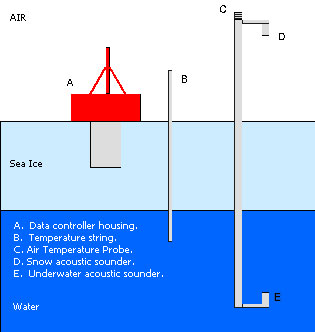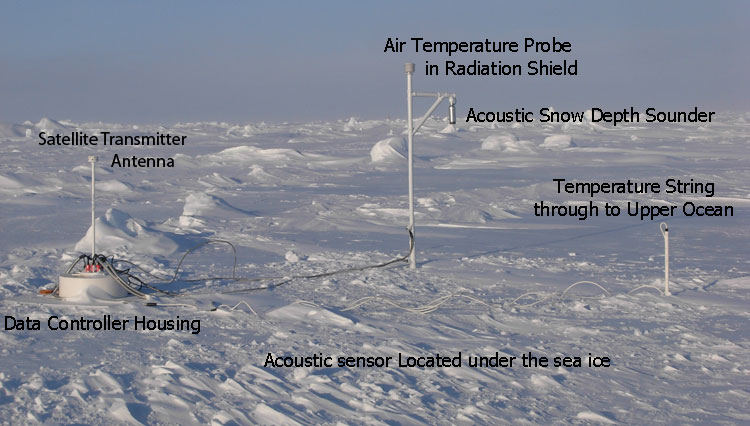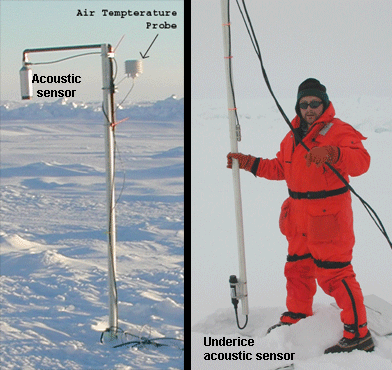The Ice Mass Balance Buoy (IMB) is an autonomous, ice-based system, designed to measure and attribute thermodynamic changes in the mass balance of the sea ice cover. The instrumentation of the autonomous mass balance buoys typically consists of a data controller module and Argos transmitter (image right, located inside A), a temperature string (B), above ice (D) and below ice (E) acoustic sounders measuring the positions of the snow/ice surface and ice bottom within 5 mm. In addition to the mass balance instrumentation the buoys have a barometer (mounted to A), and an air temperature sensor (C).
The current Thermistor strings made out of a PVC rod with thermistors mounted every 10 cm. These rods are easily connected to assemble strings that extended from the air through the snow and ice into the upper ocean. The thermistor accuracy is 0.1 C.
The data controller housing is typically a sealed 20 cm diameter aluminum tube. The controller housing contains the data controller. The data controller collects information from each instrument, processes and organizes the data, adds the date/time stamp and sends the data from the Buoy to our Laboratory. Currently, data transmissions are performed by the Iridium satellite phone communications system.


For measuring snow depth and top surface snow and ice ablation, we use an above ice acoustic sounder (rangefinder) made specifically for measuring snow depth. The sensor is mounted on a pole frozen into the ice, looking down at the snow surface. It measures distance between the instrument and the snow surface, thus recording the changes in the snow depth. When the snow melts in the summer, the instrument then measures surface ice ablation.
For the under ice acoustic sounder we use an underwater sonar altimeter mounted on a pole that is frozen into the ice and extends into the ocean. The sounder is installed so that it looks up at the underside of the ice sheet. It measures distance between the instrument and the ice bottom, thus recording the ice bottom growth and ablation.
Sea level pressure is measured using an electronic barometer. The barometer is usually mounted on the controller housing near the transmitter antennae.
The IMB Buoys are typically co-located with comlementary buoy packages put into place by our scientific partners. These packages have included web cameras looking at our installed IMB buoy and provide infromatoin on the areas ice surface morphology including melt pond coverage.

The Ice Mass Balance Buoy was developed at the Cold Regions Research and Engineering Laboratory (CRREL). The buoys were manufactured by MetOcean Data Systems in Dartmouth, Nova Scotia.